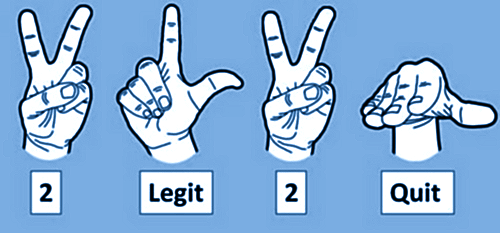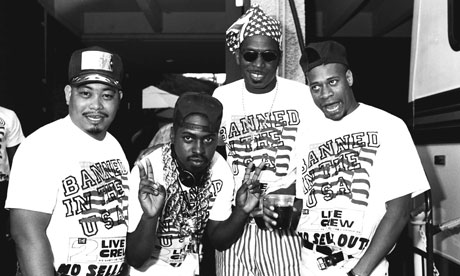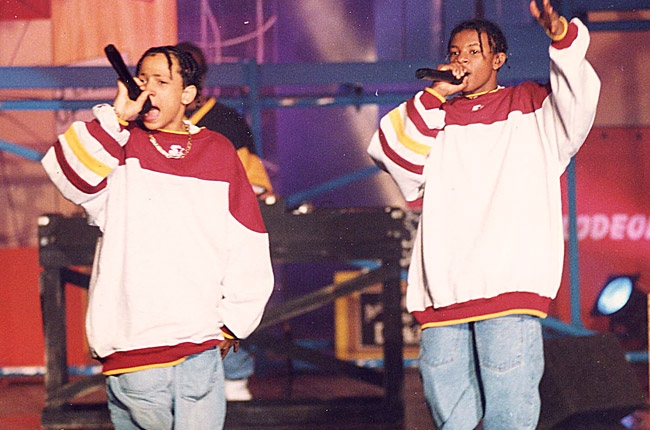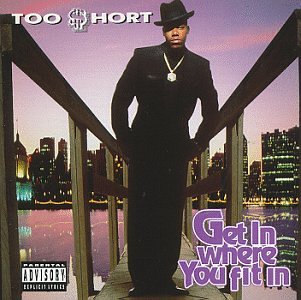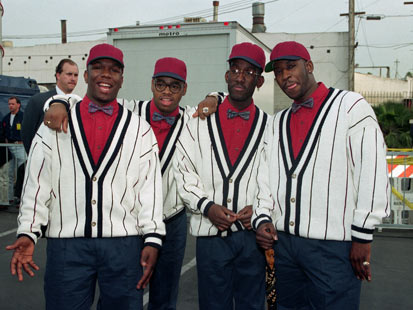Our local team draft league is in full swing. I joined forces with fellow Hipsters Hunter and Dave, and so far we have done nothing but lose. Each matchup is a best five of nine matches. So far we have won a total of four matches over the three weeks, leaving us with the unenviable record of 0-3 in the league. Losing means learning, though, and this has left me trying to figure out how we can improve our drafting going forward. This article is a direct result of the soul-searching brought on by that string of losses because I now have a theory on how to draft Born of the Gods/Theros/Theros (BTT) successfully.
Conclusion: Pack two is the most important in BTT draft. You draft one Born of the Gods pack followed by two Theros packs. That means the majority of the pool of cards you use to build your deck come from Theros. The new set changes the format, adding new strategies while augmenting the old archetypes, but this is still fundamentally a Theros draft format. That means the best cards for your deck, the cornerstones, start showing up in pack two: [casthaven]Wingsteed Rider[/casthaven], [casthaven]Nessian Asp[/casthaven], [casthaven]Keepsake Gorgon[/casthaven], Voyage’s End, [casthaven]Ordeal of Purphoros[/casthaven], [casthaven]Gray Merchant of Asphodel[/casthaven], [casthaven]Gods Willing[/casthaven], Thassa’s Emissary, and so on. You want to set yourself up to take advantage of these cards.
Focusing your draft strategy on the second pack has two big ramifications. First, you want to stay open as much as possible during pack one when you draft cards from Born of the Gods. That was already a good strategy in triple Theros, and in many draft formats, but it offers great rewards here. Second, the signals you send in the draft become more important than the signals you receive. That’s backwards from general draft theory, which puts more weight on reading the signals you receive in pack one than the signals you send.
Stay Open in Pack One
Staying open means choosing not to draft a specific archetype from the start of the draft. Theros, like most draft formats, focuses its archetypes around the ten two-color pairs. Each pair can usually support multiple styles of play, perhaps slow and fast versions. Sometimes both versions are actually good, or at least can be depending on how the deck comes together, but overall there are ten major archetypes in BTT and the deck you draft will fit into one of them. If you stay open through the first pack, then you do not commit to a specific two-color combination.
The easiest way to do this is to pick as many cards of one color as possible. You don’t want to pick a mediocre card in your color early instead of a very powerful card in another color, but you do want to weigh your picks in favor of the color you’ve chosen. Sometimes that will mean taking objectively less powerful cards. The power level disparty can be misleading, though. If you come out of pack one with ten solidly playable blue cards (some of which should be quite good), you can be pretty sure you can build a successful blue deck. Therefore, a mediocre playable blue card will make it into your deck and end up providing more power than a strong off-color card that languishes in your sideboard. [casthaven]Bolt of Keranos[/casthaven] is better than [casthaven]Stratus Walk[/casthaven], but in a heavy-blue deck the double red burn spell is probably unplayable while the two mana blue cantrip aura will most likely add value to your deck.
Focusing your first pack on one color also expands your sideboard options. [casthaven]Loyal Pegasus[/casthaven] and [casthaven]Griffin Dreamfinder[/casthaven] don’t go in the same deck, but if you are focusing on white in pack one, you can draft both. This leaves you open to drafting either an aggressive archetype like white-red featuring the pegasus, or a grindy white-black deck making good use of the griffin. You can draft a core white deck that could go in either direction, allowing you to switch strategies with your sideboard. [casthaven]Griffin Dreamfinder[/casthaven] might be quite good out of the board in a white-red aggressive deck if your opponent has tons of cheap removal, while [casthaven]Loyal Pegasus[/casthaven] can be a liability in that matchup. With the griffin post-board, you can run out a [casthaven]Hopeful Eidolon[/casthaven] on turn one or [casthaven]Everflame Eidolon[/casthaven] on turn two hoping to slap an ordeal on it. If your opponent kills it with [casthaven]Eye Gouge[/casthaven] or [casthaven]Spark Jolt[/casthaven], you can rebuy it later with the griffin and bestow away. Or you can get back the ordeal whether you got blown out or got full value the first time around. And likewise, if your opponent’s deck has a better late game than your white-black grinder deck, you can lower your curve and try to win quickly with [casthaven]Loyal Pegasus[/casthaven]. If you weren’t focusing on taking as many white cards as possible, you’d probably take a solid off-color card over the griffin or the pegasus when they don’t seem to fit your plan. By picking both, you have more options for the rest of the drafting, deckbuilding, and sideboarding.
Triple Theros was such a great draft format, in part, because the card pool was so deep that you could draft a number of interchangeable cards to fill out the last few slots of your deck and the heart of your sideboard. Triple-set draft formats lend themselves to this because you see the same cards in each pack. By the time you open pack three in triple Theros, you hope to have the majority of your core deck assembled. If you draft white-blue heroic, you can name the two or three key cards you need to pick up in the third pack (maybe [casthaven]Gods Willing[/casthaven] and [casthaven]Nimbus Naiad[/casthaven]) but otherwise you are free to snag whatever sideboard cards and curve fillers come your way.
In BTT, you only get two packs of Theros, which means you can’t use pack three to fill out your sideboard in the same way. Maybe you can, if the first two packs work out well, but more likely you will be using the marginal on-color cards you took in pack one to round out your deck and sideboard. And this in turn will allow you to maximize your picks in the Theros packs to get the most powerful cards for your archetype as it solidifies. You know those tough picks between [casthaven]Battlewise Valor[/casthaven] and Lagonna-Band Elder, where you really need the curve-filling body but you wish you had a cheap combat trick? Well, if you got a late Mortal’s Ardor in pack one, you won’t be as desperate for a pump spell, freeing you to take the creature you need.
Reverse Signals
The changing significance of signals flows directly from the focus on a single color in pack one. Signals in draft go two ways—the cards you pass tell your downstream drafters something about your picks and the cards you get passed tell you what your upstream drafters seem to be doing. When you take as many cards as you can from a single color in pack one, that makes it more likely you will be passed cards of that color in pack two. If pack two is the most important pack in the draft, that’s a big deal.
Usually the signals you receive are way more important than the signals you send. In a triple-set format, each pack is the same, so signals you see in pack one will likely indicate what you will be passed in pack three. The person drafting to your immediate right passes packs one and three to you. If they shipped [casthaven]Keepsake Gorgon[/casthaven] and [casthaven]Gray Merchant of Asphodel[/casthaven] early followed by Pharika’s Cure and [casthaven]Felhide Minotaur[/casthaven] late in pack one, you can reasonably expect they won’t be sniping your black cards in pack three. On the flip side, even if you saw a lot of black-heavy packs in pack one and thus had to pass strong cards in the same color as your picks, the player to your left is only going to be passing to you for the second pack. If you are in this situation, you can prepare by looking for your second color in pack two while you wait for the black rewards again in pack three.
When pack two is the focal point of the draft, however, the signals you send in pack one become much more important. Return to Ravnica block draft (DGR) was like this, where many people wanted to lock themselves into Gatecrash guilds, which appear in pack two of the draft. In that format, if you chose to play Boros, you had to draft as many white and red cards as you could in the first pack to avoid sending any signals downstream that might encourage the players to your left to go into Boros and cut you out of the best cards in pack two. Sometimes you couldn’t successfully cut the packs enough to avoid sending a Boros signal, and in those situations you had to hedge your bets or hope to get lucky.
Now in BTT, you want to maximize your value in pack two, so cutting your chosen color in pack one should pay off. You are still reading signals in pack one, of course, as it is hard to pick up enough cards of your chosen color unless they are being passed to you. You won’t really know what color will be best until you are four or five picks deep, depending on how strong the card pool for pack one is, but you should be able to pick up some powerful cards that pull you into a specific color.
The signals you receive in pack one of BTT may mean less than they did in triple Theros draft, though. Because the first and third packs are different, the upstream drafters may value the black cards in Theros a lot more than the ones in Born of the Gods. [casthaven]Shrike Harpy[/casthaven] and [casthaven]Asphyxiate[/casthaven] are strong black cards, but they aren’t consensus first picks like [casthaven]Keepsake Gorgon[/casthaven] and Gray Merchant. (At least not yet—I wouldn’t be surprised if they end up there as the format progresses.) Maybe the drafter to your right focuses on green in pack one while you focus on black. Then in pack two they open a [casthaven]Reaper of the Wilds[/casthaven] and decide to make black their secondary color. As you won’t be passing a ton of black in pack two, they will probably be heavy green going into pack three and hoping to scoop up any powerful black cards they can. At that point, the fact they sent black signals to you in pack one is meaningless.
And this leads to the final point. By staying in one color through pack one, you effectively turn the BTT draft into a two-pack Theros draft where you have a head start in one color. That’s a good place to be, especially since Theros has many rewards for being heavily devoted to one color. If you successfully cut the people to your left out of white in pack one, you will probably get plenty of white in pack two, and you are free to add whatever powerful cards from a second color that you happen to get. But even if you couldn’t ensure the free flow of white cards in pack two, you can relegate white to your support color and find a primary color in the two Theros packs. Finally, if you were able to snatch up so many white cards in pack one, there’s a good chance some more will come your way in pack three. The scenario I described above with [casthaven]Reaper of the Wilds[/casthaven] can happen, but it is unlikely that your primary color from Born of the Gods will run dry from both directions in Theros.
Try my theory out and let me know how it works for you! I’m excited to watch the Pro Tour Born of the Gods coverage this weekend to see what the top pros do with this exciting draft format. We shall see how my advice lines up with theirs!
Carrie O’Hara is Editor-in-Chief of Hipsters of the Coast.

